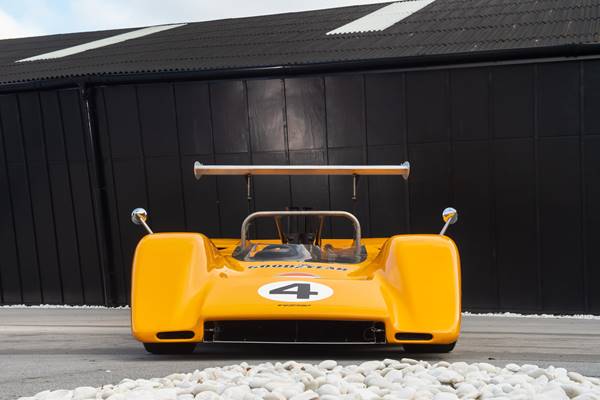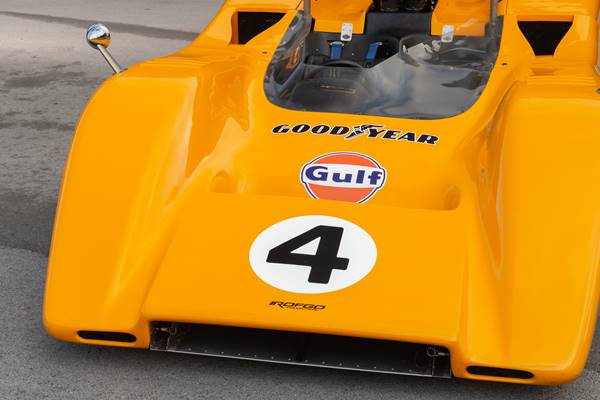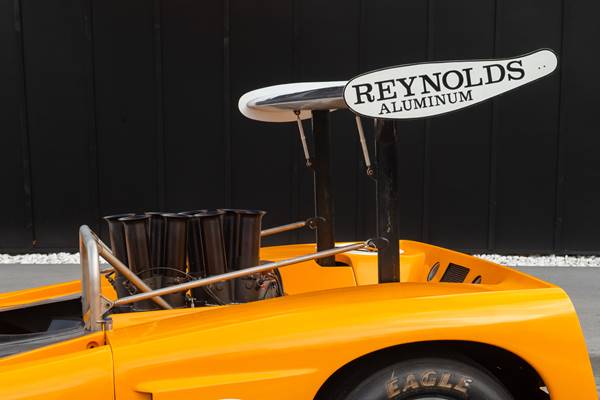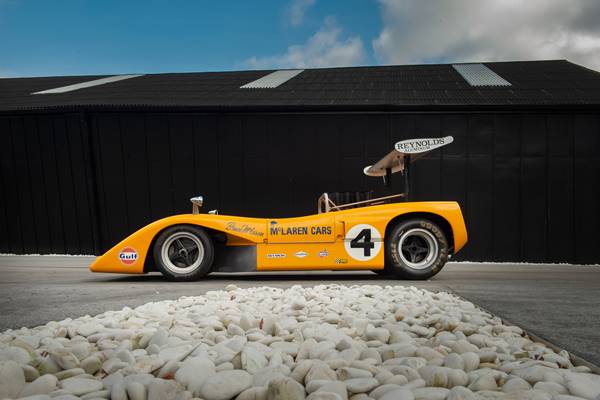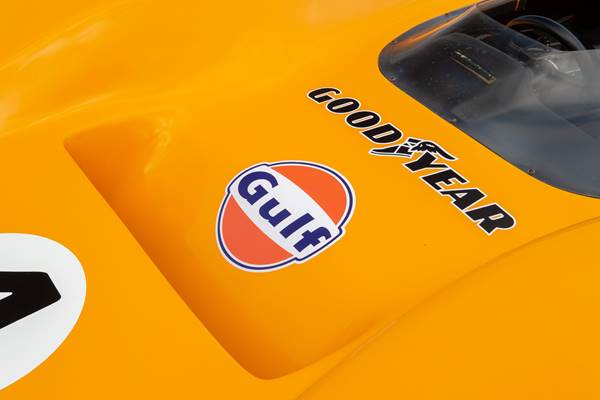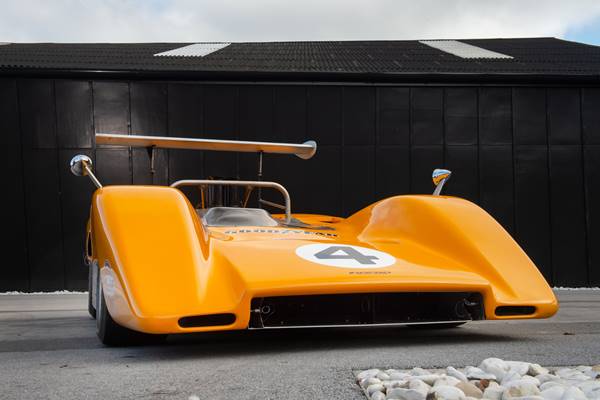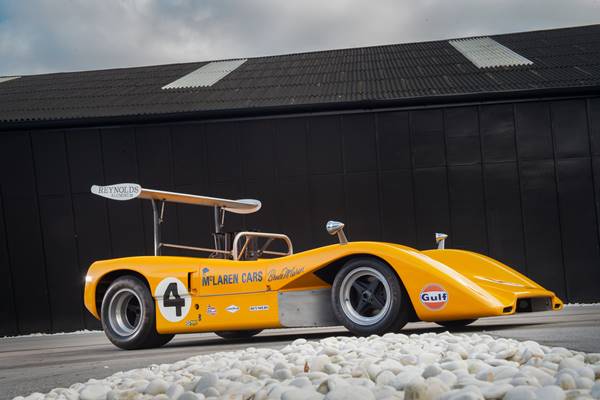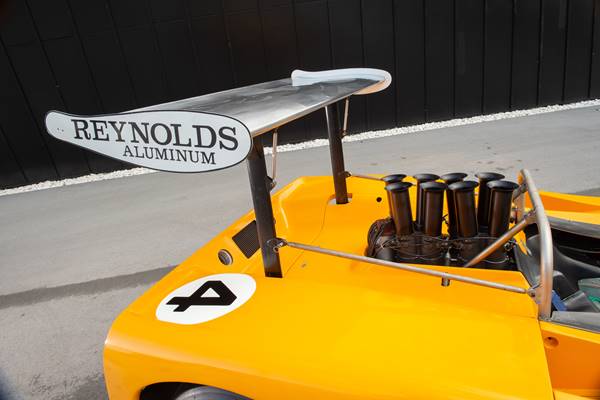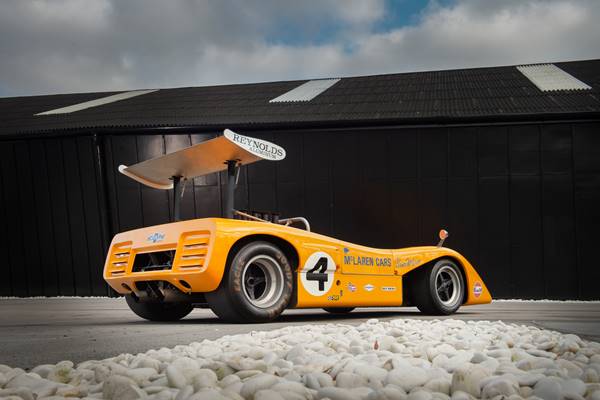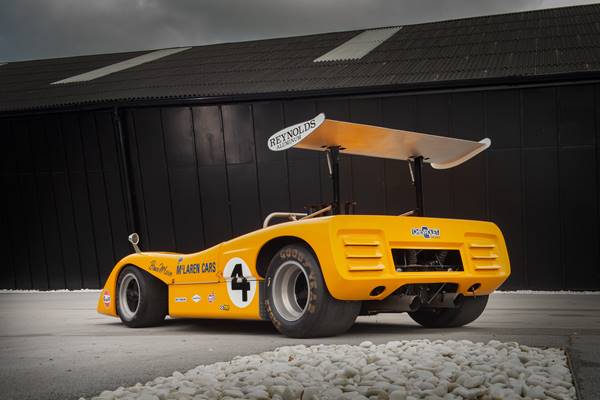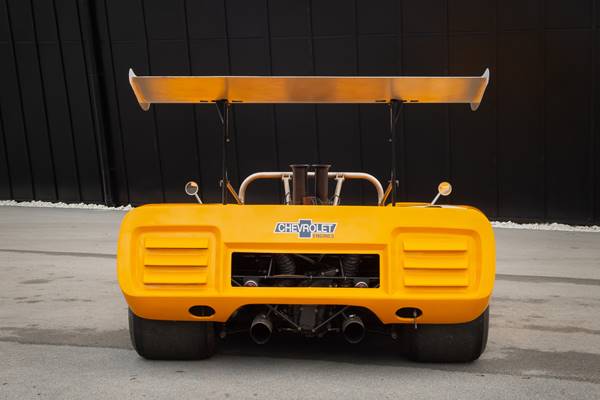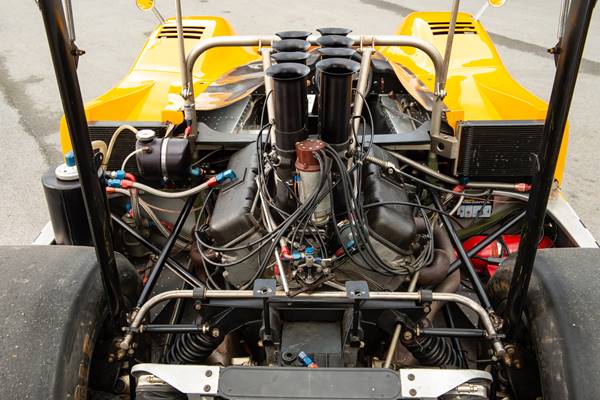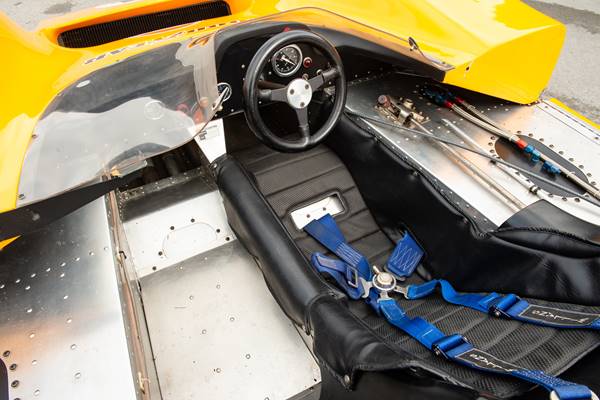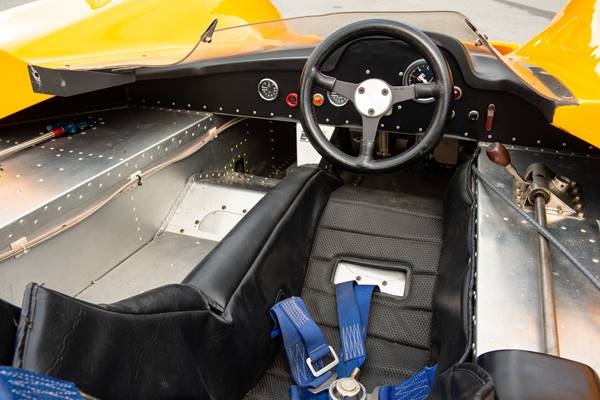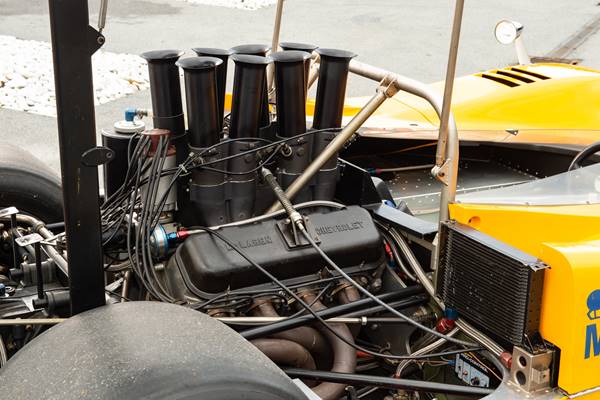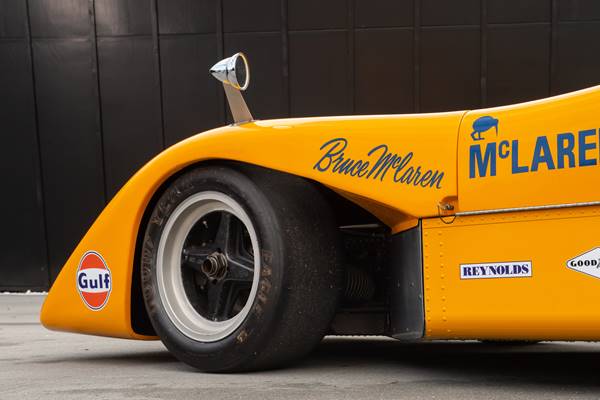Already known as "The Bruce and Denny Show" due to Bruce McLaren and Denny Hulme winning five of the six Can-Am races in the 1967 season, 1968 started off with an equally dominant performance by McLaren and Hulme in the new M8A at the Road America Can-Am race. Hulme won the race with McLaren second. The M8A faltered at the next race in Bridgehampton, where both cars retired due to engine failure. Following the double retirement, the team reduced the compression ratio of their engines to 12:1, from 13:1, trading horsepower for increased reliability.
McLaren roared back with another 1-2 finish in Edmonton, but then could only manage second and fifth in rainy conditions at Laguna Seca. It was beginning to look like the competition had caught up with McLaren.
The tide turned for the last two races, with the team's mechanics able to extract more power from their engine. Bruce McLaren won in the searing heat at Riverside and Denny Hulme won in Las Vegas. Hulme won the 1968 championship with 35 points, and McLaren finished second with 24 points.
The M8B was developed for the 1969 Can-Am season. The most noticeable difference was that the rear wing was now mounted high on pylons, like the Chaparral 2E. The wing mounting pylons passed through the bodywork to attach directly to the suspension uprights. This arrangement allowed McLaren to run softer springs than would have been required had the massive rear wing been attached to the bodywork. The body was also widened in order to fit one-inch wider wheels, now 15 x 11 front and 15 x 16 rear. The 1969 engine was a shorter stroke, larger bore version of the 1968 engine. It was built by George Bolthoff and developed 630bhp from 7,046 cc (430.0 cu in). Two complete M8B race cars and one spare tub were built using parts from the three M8As.
